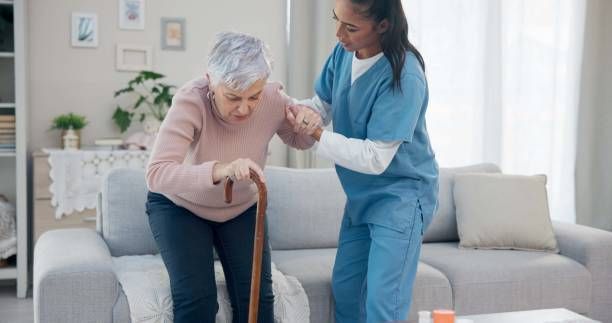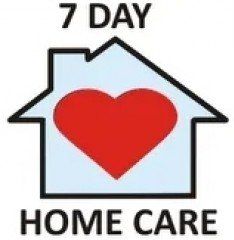15 Key Pneumonia Symptoms
According to American Lung Association "Pneumonia symptoms can vary from so mild you barely notice them, to so severe that hospitalization is required. How your body responds to pneumonia depends on the type germ causing the infection, your age and your overall health."
The Mayo Clinic explains "Pneumonia is an infection that inflames the air sacs in one or both lungs. The air sacs may fill with fluid or pus (purulent material), causing cough with phlegm or pus, fever, chills, and difficulty breathing. A variety of organisms, including bacteria, viruses and fungi, can cause pneumonia. Pneumonia can range in seriousness from mild to life-threatening. It is most serious for infants and young children, people older than age 65, and people with health problems or weakened immune systems."
More, according to Cleveland Clinic "while all pneumonia is inflammation caused by an infection in your lungs, you may have different symptoms depending on whether the root cause is a virus, bacteria or fungi. Bacterial pneumonia tends to be more common and more severe than viral pneumonia. It’s more likely to require a hospital stay. Providers treat bacterial pneumonia with antibiotics. Viral pneumonia causes flu-like symptoms and is more likely to resolve on its own. You usually don’t need specific treatment for viral pneumonia."

Recognizing the Symptoms of Pneumonia Early is Crucial for Treatment and Recovery
Pneumonia is a serious lung infection that can affect anyone, from infants to older adults. Recognizing its symptoms early is crucial for effective treatment and recovery. As a leading provider of home care services, 7 Day Home Care prioritizes educating families about health concerns like pneumonia, ensuring timely intervention for loved ones.
In this article, we review 15 distinct symptoms of pneumonia, explaining their causes, variations in presentation, and how they may appear in different populations. Understanding these symptoms empowers individuals and families to seek prompt medical attention, which is critical for managing this potentially life-threatening condition.
1. Persistent Cough From Pneumonia
A persistent cough is one of the hallmark symptoms of pneumonia. The cough may produce:
• Thick mucus (phlegm) that can be green, yellow, or even blood-tinged.
• A dry cough in viral pneumonia, especially in its early stages.
This symptom occurs as the body attempts to clear the lungs of infection and debris. If a cough worsens or lasts longer than three weeks, it warrants immediate medical evaluation.
2. Fever From Pneumonia
A fever signals that your immune system is fighting an infection. With pneumonia:
• Fevers are often high (above 101°F or 38.5°C) but can vary.
• Shaking chills (rigors) may accompany a fever, especially in bacterial pneumonia.
Uncontrolled fever can lead to dehydration or complications in vulnerable populations, such as older adults or individuals with weakened immune systems.
3. Shortness of Breath From Pneumonia
Difficulty breathing or feeling breathless during everyday activities is another red flag for pneumonia. This occurs because:
• The lungs fill with fluid or pus, limiting oxygen exchange.
• Severe cases may lead to low blood oxygen levels, resulting in further complications.
Shortness of breath is more pronounced in individuals with pre-existing respiratory conditions, such as asthma or COPD.
4. Chest Pain From Pneumonia
Chest pain is a common symptom, particularly during coughing or deep breathing. This discomfort is caused by:
• Inflammation of the lung tissue and surrounding areas.
• In severe cases, pleurisy, where the lining of the lungs becomes inflamed.
If chest pain is sharp, localized, and worsens with movement, it’s a clear sign to seek medical attention.
5. Fatigue From Pneumonia
Fatigue during pneumonia can feel overwhelming, making even basic tasks exhausting. This occurs because:
• The body redirects energy to fight the infection.
• Reduced oxygen levels from impaired lung function exacerbate tiredness.
Persistent fatigue post-recovery may indicate lingering effects of pneumonia, known as post-pneumonia fatigue.
6. Sweating and Clamminess From Pneumonia
Excessive sweating and clammy skin are often linked to fever and the body’s efforts to regulate its temperature. These symptoms may:
• Occur alongside chills.
• Signal dehydration if fluid intake is insufficient.
7. Loss of Appetite From Pneumonia
Pneumonia can suppress hunger due to the body’s focus on fighting infection. Contributing factors include:
• Nausea, fatigue, and fever.
• Difficulty breathing, which makes eating feel burdensome.
For seniors, loss of appetite can lead to malnutrition and delayed recovery, necessitating proper nutritional care.
8. Nausea or Vomiting From Pneumonia
Nausea and vomiting are more common in children with pneumonia but can also affect adults. These symptoms:
• May be due to swallowing mucus or the body’s inflammatory response.
• Can lead to dehydration if not managed appropriately.
Nausea and vomiting in a senior with pneumonia can lead to dehydration, malnutrition, and weakened immunity, further complicating their recovery.
9. Confusion or Delirium From Pneumonia
Confusion, memory problems, or delirium are warning signs, particularly in older adults. This occurs because:
• Low oxygen levels impact brain function.
• Fever and infection can exacerbate cognitive decline in individuals with dementia.
This symptom requires urgent medical intervention, as it may indicate severe pneumonia.
10. Low Body Temperature From Pneumonia
While fever is common, some individuals—especially older adults or those with weakened immune systems—may experience hypothermia (low body temperature). This symptom indicates:
• A severe infection where the body’s temperature regulation fails.
• A potential marker of septic shock in advanced cases.
11. Rapid Breathing From Pneumonia
Increased breathing rate (tachypnea) is a compensatory mechanism to meet the body’s oxygen demands. It is more evident in:
• Infants and children, where parents might notice nostril flaring or grunting.
• Severe cases requiring hospitalization for oxygen therapy.
12. Cyanosis From Pneumonia
Cyanosis refers to the bluish discoloration of the lips, fingertips, or skin, indicating dangerously low oxygen levels in the blood. This life-threatening symptom requires:
• Immediate emergency care.
• Supplemental oxygen and further evaluation.
13. Headache From Pneumonia
Headaches may accompany other symptoms like fever and fatigue. In pneumonia, they are often caused by:
• Dehydration.
• Reduced oxygen flow to the brain.
Persistent or worsening headaches should not be ignored, as they may signal complications.
14. Muscle Aches and Joint Pain From Pneumonia
Muscle aches and joint pain are common with viral pneumonia or as part of a systemic inflammatory response. These symptoms:
• Mimic flu-like discomfort in early stages.
• May persist during recovery as the body rebuilds strength.
15. Difficulty Breathing in Infants and Children From Pneumonia
Young children often exhibit unique symptoms of pneumonia, such as:
• Rapid chest movements due to labored breathing.
• Flaring nostrils, grunting, or wheezing.
• Refusal to feed or lethargy.
Parents should monitor for these signs, as pneumonia in children can escalate quickly.
Risk Factors for Severe Symptoms From Pneumonia
Certain populations are more likely to experience severe pneumonia symptoms, including:
• Seniors over 65 years: Aging weakens the immune system.
• Infants and young children: Underdeveloped immunity.
• Individuals with chronic illnesses: Diabetes, heart disease, or respiratory conditions.
• People with weakened immune systems: Due to chemotherapy, HIV/AIDS, or organ transplants.
When to Seek Medical Help For Pneumonia
Immediate medical attention is necessary if pneumonia symptoms include:
• High fever with chills or confusion.
• Persistent chest pain or shortness of breath.
• Cyanosis or difficulty breathing.
Preventing Pneumonia
Prevention is always better than cure. Consider the following measures:
• Vaccination: Ask your doctor and medical professionals about the prospects of vaccinations
• Good hygiene: Frequent handwashing and avoiding sick individuals.
• Healthy lifestyle: Adequate sleep, balanced nutrition, and regular exercise.
• Smoking cessation: Smoking damages lung tissue and increases infection risk.
How 7 Day Home Care Can Help
At 7 Day Home Care, we provide professional and compassionate support for individuals recovering from pneumonia. Our services include:
• In-home care to monitor symptoms and ensure medication compliance.
• Assistance with meal preparation and hydration to combat fatigue and loss of appetite.
• Skilled caregiving for those with complications or post-hospitalization recovery needs.
Our caregivers are certified and supervised by registered nurses, ensuring the highest standard of care. If you or your loved one is managing pneumonia or its aftereffects, contact us for tailored in-home support.
Understanding these 15 distinct symptoms of pneumonia empowers individuals and families to act quickly, ensuring early diagnosis and effective treatment. Whether it’s a persistent cough, fever, or more subtle signs like confusion or low body temperature, pneumonia should never be ignored.
At 7 Day Home Care, we’re committed to helping families navigate health challenges with expertise and compassion. For more information, visit here or call 516-408-0034 to discuss how we can support your loved one’s recovery. 7 Day Home Care is a licensed home care agency providing services in Manhattan, Queens, Brooklyn, Nassau County, and Suffolk County, New York.
Brian Callahan
7 Day Home Care










